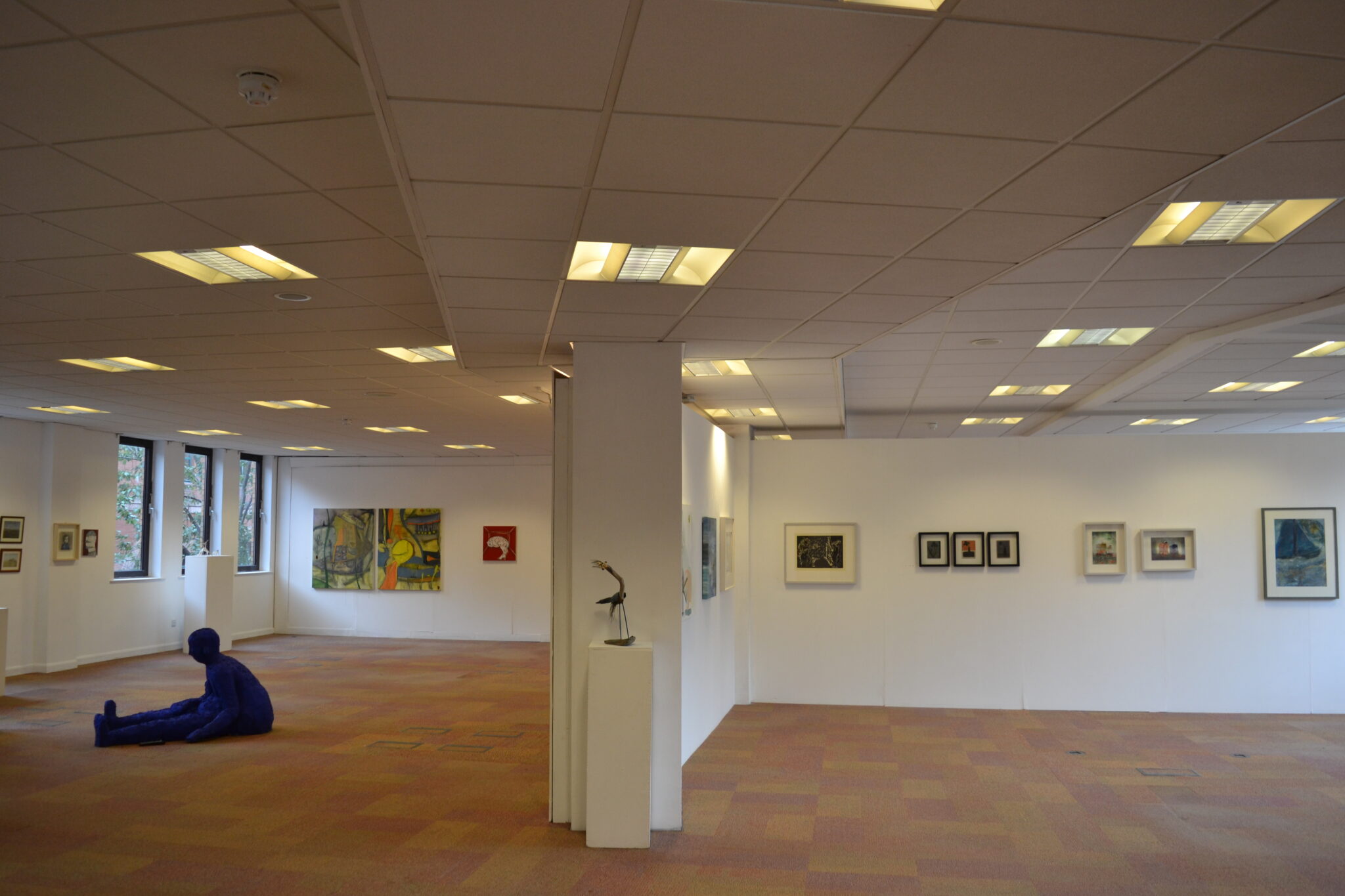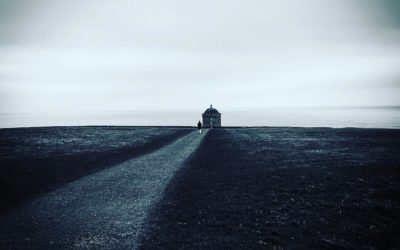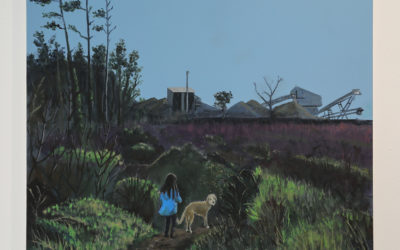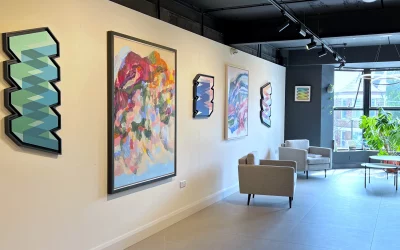First published in the VAN (Visual Artists News Sheet) 9 September 2022.
Back in late-nineties Belfast, a loose agreement was formed between several like-minded artists in the east of the city to organise a group exhibition in a local venue. Said venue cancelled before the show could open but thanks to the benevolence of an open-minded developer, and the persistence of founder Cliff Brooks, the Engine Room Gallery-cum-collective was born in an old linen mill, occupying the site of the building’s former engine room. Since then, the gallery has been through many incarnations, or at least locations, in its 25-year history. On short leases in several sites – in the east, the city centre, and now spread over three large floors in its current location in Belfast’s Cathedral Quarter – the gallery has maintained its independence and seems to be thriving.
The recent ‘Summer Show’ comprised close to 100 works by approximately 50 artists. There was no theme for the exhibition and there was a huge range of work on display, in keeping with the gallery’s ethos of embracing artists at different careers stages – from those with no formal art qualifications and recent graduates (the gallery offers a series of Belfast School of Art awards) to established artists, RUA members, and internationally-recognised figures. The show encompassed diverse subject matter, style and media, ranging from figurative and abstract paintings to assemblage sculptures, installations, prints and drawings.
Also evident was an impressive range of scales, from Leanne McClean’s small and delicate animal figures – the forms suggested by found objects such as bleached wood fragments, seed pods and clock parts (there are horologists in the family) – to recent graduate Juste Bernotaite’s heavily impastoed painting, Sibire (Siberia in Lithuanian) (2022) which is almost two metres in width. An aspect of the space that Brooks remarks on, with reference to the gallery’s previous location, equally applies here, namely that it is “large enough to allow you to see, especially larger scale works, from a distance [which is] unusual, apart from museum-type spaces or large, funded spaces”.
As I enter, I catch sight of the piece used to advertise the exhibition – Megalith by artist, and psychoanalytic psychotherapist, Cheryl Bleakley. Square in format, the painting is an abstracted landscape composition of carefully balanced forms, one of which resembles a standing stone, in harmonious shades of warm and cool greens. A second work by Bleakley in the show couldn’t be more different; a surreal, abstract still-life of biomorphic, stacked forms, rendered in paint dribbles.
There is a trio of small works on paper by Marjorie Block from her ‘Black Flag Iris’ series. A flash of rusty orange in the middle piece provides a contrast in what is otherwise a melancholy and emotive series of dark flowers silhouetted on muted greys, some of which seem to have been produced around the time of the first lockdown in 2020.
Elsewhere, there is a poignant pairing of figurative pieces: a sensitive small portrait of a young child in a blue anorak (Victoria Perykash, Refugee); and Head by Jack Pakenham, a profile of a head cut from canvas and mounted on a blood-red support. In the latter, the profile is featureless and wrapped in what appears to be packing or insulation tape, covering the eyes, ears, mouth and throat. Although it looks to be an outtake from his 2000 painting National Identity Crisis (featuring similar cut-out heads) and more to do with the political situation in Northern Ireland (the cranium is daubed with the letters INLA, RUC, etc.), the implication of being silenced and unable to see or breathe also has troubling resonances with the refugee experience.
Placed is one of four acrylic and charcoal pieces in the show by Natalie Gibson. A recipient of the 2022 Freelands Painting Prize, her works here show lifeless lambs in various poses, their gaunt little bodies with protruding ribs modelled with scratched lines, like a comb dragged through wet paint. In Placed, the delineated enclosure that contains the animal calls to mind similar structures found in the paintings of Francis Bacon.
Indeed, animals feature throughout the show, for example in Jenny King’s large-format painting, Dog Teeth – a canine Laocoön with writhing serpents and a pathos-filled dog portrait; or the cows in Liam de Frinse’s multi-layered and stencilled mixed-media pieces, Far Off Fields 1 & 2; Austin Clarke’s stark Big Lonely Dog, the red animal possibly semi-submerged, creating a sensation not unlike Goya’s Drowning Dog (1823); Coby Moore’s densely scratched, drypoint print, Black Bird; or Sara Falloon’s wonderfully inventive and playful sculptural assemblage birds. However, as already indicated, it is difficult to make further general statements about such a varied show in which almost every genre is represented.
Jonathan Brennan is a multidisciplinary artist based in Belfast.




